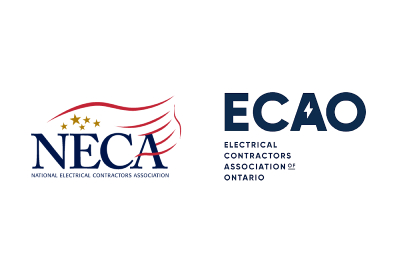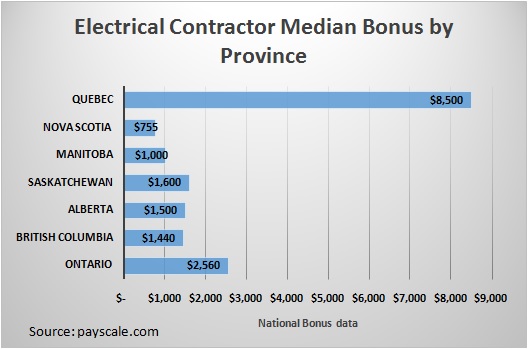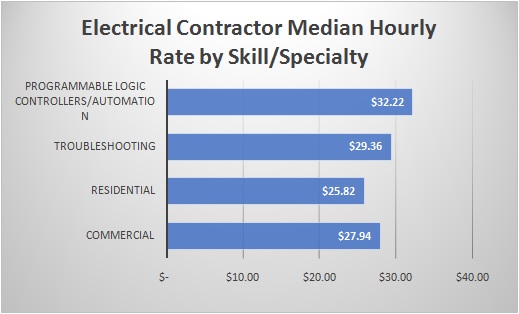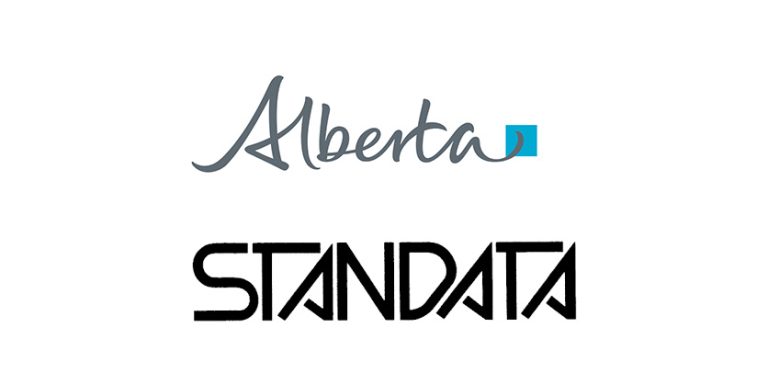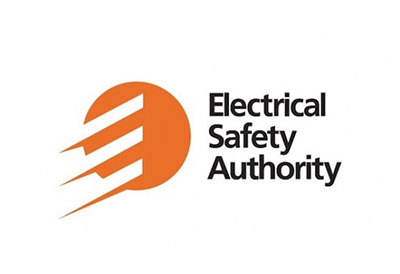Power Shifts: Emerging Low-Voltage Trends, Impacts and Opportunities, Part 4

July 9, 2017
In the previous issue of Electrical Industry Newsweek, we continued our coverage of Electro-Federation Canada’s recently released research report, Power Shifts: Emerging Low-Voltage Trends, Impacts and Opportunities for the Canadian Electrical Channel. The article looked at implications for codes, standards and regulations. In this article, the fourth of five: low-voltage DC power trends.
Market adoption
The adoption of new technology has gained rapid momentum, fuelled by consumers’ demand for the latest trends (e.g., Tesla, iPhones), and their need for plug-and-play solutions that reduce time-to-install and increase cost savings. These factors are all driving the uptake of solutions like LVDC-enabled systems, which offer fast, reliable and secure system integration options for networks. But how do these trends carry over into residential, commercial and industrial spaces? These three sectors are quite different in their approaches and core needs.
According to a Darnell Group Report[1], the DC building power market is set to exceed US$2 billion. An analyst with the Darnell Group said, “In the near term, data centres and commercial/Industrial facilities are expected to offer the bulk of the sales opportunities.” These sectors are projected to reach their adoption stages by 2019. “A little further out, telecommunications installations will begin to offer significant possibilities for sales. The residential DC industry is in a much earlier stage of development… in the long run, residential construction will present the largest market segment for DC building power.”
Residential
Homeowners are increasingly interested in smart home options, with new systems that can do more with less; they are opting for systems that are less complex, offer quick installation, low labour and maintenance costs, and reduce energy consumption. Low voltage DC systems and applications allow homeowners to achieve these advantages by offering solutions that control lighting, security, entertainment, and heating systems — all from sensors running on low-voltage cables, connected to one central point of access such as a tablet or mobile phone. Wireless systems are also rising in popularity thanks to a different mix of opportunities, and have a different set of technical barriers and design consideration such as coverage, bandwidth and attenuation. However, adoption will continue to grow as these improve.
Contractors have a clear opportunity to help design and develop homes that deliver integrated systems. Real estate agents are also now showing an interest in understanding what consumers are looking for in a smart home. At EFC’s LVDC Industry Summit, Gerald Prolas from Legrand Canada shared insight from a study by Coldwell Banker Real Estate, which reported that 64% of real estate agents surveyed said that buyers today are more interested in homes with smart home features and technology than they were two to five years ago.[2]
According to the survey, homebuyers are most interested in smart home technology for the following categories:
• security (65%)
• temperature control (57%)
• safety (48%)
• lighting (46%)
• entertainment (42%)
• appliances (23%)
Gerald Prolas states that home technology adoption and the emergence of the Internet of Things (IoT) continue to fuel the requirements for automation in homes today. “There’s more technology in the automobile that’s parked on your driveway than there is inside your home.” Consumers will continue to expect enhanced technology features in their home, and are looking to security companies and system integrators to provide and install solutions. In fact, a 2016 McKinsey Connected Homes study found that three-quarters of connected home devices are purchased through such service providers today.[3]
Bill Stephens from Ideal shares: “From the end user’s point of view, this technology is incredibly complicated. The options and choices they have are so immense, quite often they will not always make the best choice for themselves. But there’s just so much out there. I don’t know if standards will ever help that, but I know that when you talk to end users they are all over the map in what they want and what they need.”
Builders, real estate agents and electrical contractors have no choice but to improve their technology and residential network knowledge, and this presents an opportunity for electrical equipment suppliers to lead in offering sales support and training.
While interest in low-voltage technology among consumers is gaining momentum, the residential DC industry is still in a much earlier stage of development than the commercial and industrial sectors.
Despite the trend towards Zero Net energy, this sector does not have an established set of standards or any large bodies or organizations actively promoting technology or products.[4] This slow progression of standards poses a risk for LVDC opportunities in the residential space (as it does in the other market sectors as well).
During the EFC LVDC Industry Summit, Karen Pugliese from CommScope stressed the importance of standards for LVDC systems. “Without standards, there is a variance in what end users are going to get, as we’ve seen in the security industry. End users can end up with a system that doesn’t talk to various other elements; they end up with a very slim semblance of what they thought they were going to get. As we go through this transition, standardization and education components will be critical.”
Commercial
The state of California, a leader in energy management, has mandated net-zero building designs for new construction by 2030: “We believe that DC-to-DC will play a role in reaching net-zero electricity in residential and commercial buildings.”[5] With goals such as these set in other jurisdictions for LEED-certified “smart” buildings, property managers and business owners are moving towards establishing integrated systems that allow them to reduce energy costs, optimize space utilization, improve productivity and enhance the overall inbuilding experience of occupants.
Karen Pugliese shared her perspective on smart building adoption in the commercial space. “I do believe that organizations will look for means to provide employees with a better experience, and part of that experience is to allow employees to manage their space and manage how they work within the space. The only way for them to do that, the only way that I see them doing that long term, is through using an app that the Internet of Things (IoT) runs on and a low-voltage cabling solution.”
CEOs, CIOs and COOs are looking for ways they can reduce costs to fund new integrated retrofits and one of the first areas many are looking at is energy consumption. Energy is the largest percentage of costs within a building and lighting is the key driver in that “32% of it comes down to lighting costs, followed by HVAC and other drivers,” said Pugliese. “LED lighting, whether run over low-voltage cable or not, offers significant cost savings.”
But a more significant saving can be gained by examining space utilization. According to Karen, less than 50% of space in a typical building is utilized. With the cost per desk amounting to $10,000 per year, potential savings from better space utilization and increased employee productivity are far greater than energy savings.
This same principle can be illustrated using the “3-30-300” Rule, which refers to the estimated amount a company pays per square foot annually for energy costs vs. real estate costs vs. the cost of its workforce respectively. This rule of thumb provides organizations with better visibility into their operating costs: “With energy representing approximately $3 per square foot, energy savings merely scratch the surface of the overall value proposition for smart buildings.
Using sensor technologies to understand how occupants actually use space has the potential to reduce the $30/sq. ft. real estate costs by a factor of 10x the energy costs. And because a company’s largest expense is often its payroll — at $300 per square foot — if you use smart building technology to offer customizable and controllable environments to increase employee productivity and tenant satisfaction, this value can be 100x the energy costs – or more.”[6]
These building management trends are leading to commercial retrofits that include sensors and controls that provide real-time data on space utilization, so that lighting, temperature, etc. can be adjusted in each area based on changing occupancy needs. A low-voltage DC power infrastructure can provide power to such devices (often with the ease of plug-and-play functionality), as well as support the building systems that they serve, leading to higher electrical efficiencies, operating flexibilities, and competitive total project costs.
Industrial
The industrial sector has long been an adopter of DC PoE-powered integrated control systems. Many factories are already equipped with sensors and actuators that enable efficient process controls and effective operation of motors, pumps, fans, lighting, compressors, power supplies, computers, data networks, personal safety, and security. This sector has been the first to pursue the Internet of Things (IoT), for which it has its own subset name: “Industrial Internet of Things (IIoT).” This quest for smarter systems has also progressed to support the information exchange between pieces of production equipment, and this aspect of IoT/IIoT is referred to “Machine-to-machine (M2M).”
The longevity and wide-ranging benefits of integrated systems in the industrial sector show the strong promise of opportunities and results homeowners and businesses can expect as they adopt the next cycle of system interoperability. LVDC power is an ideal infrastructure by which to support these systems.
Coming in Part 5: LVDC developments leading adoption in the electrical market.
Find out more about Power Shifts: Emerging Low-Voltage Trends, Impacts and Opportunities for the Canadian Electrical Channel: www.electrofed.com/market-research/.
Notes
1. “DC Building Power: Emerging Trends, Application Drivers, Market Opportunities, Adoption Rates and Forecasts”, published by Darnell Group. Accessed from NEMA Workspaces, March 2017
2. “Coldwell Banker Real Estate Survey Finds the Technology of Tomorrow Helps Many Smart Homes Sell Faster Today”, March 11, 2015: https://www.coldwellbanker.ca/press-release/smarthomes
3. “There’s No Place Like a Connected Home,” McKinsey & Company, 2016. Accessed February 2017: http://www.mckinsey.com/spContent/connected_homes/index.html Where is LVDC Found Today?
4. “DC Building Power: Emerging Trends, Application Drivers, Market Opportunities, Adoption Rates and Forecasts”, published by Darnell Group. Accessed from NEMA Workspaces, March 2017: http://workspaces.nema.org/public/ LVDC/Lists/Team%20Discussion/Attachments/14/darnell_market_product_info.pdf LVDC/Lists/Team%20Discussion/Attachments/14/darnell_market_product_info.pdf
5. “Direct Current to Direct Current – A Bridge to Zero Net Energy”, Karl Johnson, California Institute for Energy and Environment, University of California at Berkeley & Elaine Hebert, Energy Efficiency Specialist, State of California, 2012. Accessed March 2017: https://ases.conference-services.net/resources/252/2859/pdf/SOLAR2012_0306_full%20paper.pdf
6. “The 3-30-300 Principle: Smart Buildings Unlock Exponential Value”, Environmental Protection, August 8, 2016. Accessed March 2017: https://eponline.com/blogs/environmental-protection-blog/2016/08/smart-buildingsunlock-exponential-value.aspx



